Faisalabad, the city of textile was once known as Lyallpur. Faisalabad is the third busiest and most populous city in Pakistan. Ranked as the second biggest city of Eastern Punjab, Faisalabad was developed in the British reign and it is also considered as the first planned city of Pakistan. when we talk about the total covered area of it ranges from 5856 KM to 6000 KM.
Faisalabad was once part of the ancient province of Jhang and Sandalbar, mainly of dense jungles and local tribes. The city of Lyallpur first came into existence in 1880 in the city center built by Captain Poham Young, imitating the Union Flag with an eight-lane exit from the main clock tower (GhentaGhar) in the center of eight different markets. In 1895, the railway connection between Wazirabad and Lyallpur was terminated. As colonial development progressed, Lyallpur was given the position of Tehsil in Jhang district and its ongoing administration in the tents at the old Pucca Mari near Tariqabad. In 1943, Muhammad Ali Jinnah came to Lyallpur and addressed a gathering of over two million people at Dhobi Ghat ground. The city grew into a strong industrial and agricultural center and in Pakistan's independence was a large urban area. In 1977, the city's name was changed to "Faisalabad", after the late King Faisal of Saudi Arabia commemorated the deep friendship that existed between the two major Muslim countries in the world. In 1985, Faisalabad was developed into separate regions of Faisalabad, Jhang, and Toba Tek Singh.
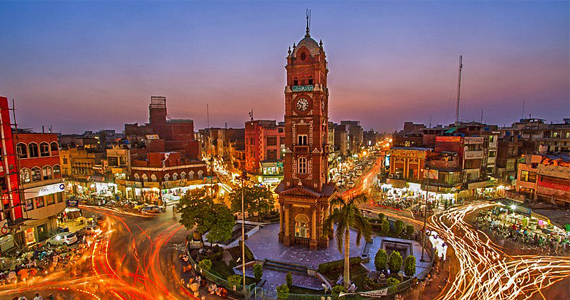
Independence Journey of Faisalabad
In August 1947, following thirty years of patriot battles, India and Pakistan accomplished freedom. The British consented to segment frontier India into two sovereign states – Pakistan with a Muslim lion's share, and India with a Hindu greater part; be that as it may, a larger number of Muslims stayed in India than what overseeing specialists accepted would absorb into Pakistan. The apportioning prompted a mass relocation of an expected 10 million individuals which made it the biggest mass movement in mankind's set of experiences. India's Bengal territory was partitioned into East Pakistan and West Bengal (India), and the Punjab Province was isolated into Punjab (West Pakistan) and Punjab, India. There were additionally particular divisions of the British Indian Army, the Indian Civil Service, different authoritative administrations, the focal depository, and the rail lines. Uproars and nearby battling followed the speedy withdrawal of the British, bringing about an expected 1,000,000 regular citizens passings, especially in the western district of Punjab. Lyallpur, which was situated in the area of the Punjab Province that turned out to be West Pakistan, was populated by various Hindus and Sikhs who relocated to India, while Muslim evacuees from India got comfortable with the locale.
In 1977, Pakistani specialists changed the name of the city to "Faisalabad" to respect the cozy relationship of Faisal of Saudi Arabia with Pakistan. During the eighties, the city understood an expansion in an unfamiliar venture. More Faisalabadis started working abroad as two-sided ties improved inside the new territory. This prompted more financial supports getting back to the city that helped the advancement of the region. In 1985, the city was updated as a division with the locale of Faisalabad, Jhang, and Toba Tek Singh.
Location and Temperature of Faisalabad
Faisalabad lies in the moving level fields of upper east Punjab, at 186 meters (610 ft) above ocean level. The city legitimate contains roughly 1,230 square kilometers (470 sq mi) while the area envelops in excess of 16,000 square kilometers (6,200 sq mi). The Chenab River streams around 30 kilometers (19 mi), and the Ravi River wanders 40 kilometers (25 mi) toward the southeast. The lower Chenab trench gives water to 80% of developed terrains making it the fundamental wellspring of the water system. Faisalabad is bound on the north by Chiniot and Sheikhupura, on the east by Sheikhupura and Sahiwal, on the south by Sahiwal and Toba Tek Singh, and on the west by Jhang.
The climate of Faisalabad is very unpredictable. It can go up to 50°C in summers. The hot weather of Faisalabad makes the city highly humid in the summers. On the other hand, the temperature of Faisalabad can go as low as -1 °C. The normal yearly recorded figure of rain is roughly 615 millimeters. It is at its top in July and August during storm season however western aggravations during cold weather months likewise carry impressive precipitation related to hail. Rainstorm season what begins in July and finishes in September carries hefty downpour to the city causing streak flooding. If the storm flows communicate with the western aggravation, at that point torrent can likewise happen. July is the wettest month of the year during which flooding is accounted for a number of times. Storm closes in September and afterward, the dry period starts.
October and November are the driest months with next to no precipitation. During winter the climate normally stays overcast related to regular haze. Record-breaking precipitation of 264.2 millimeters (10.40 in) was recorded on 5 September 1961 by the Pakistan Meteorological Department. The temperature of the city has arrived at a late spring greatest record temperature of 48.0 °C (118.4 °F), which was seen on 9 June 1947 and again on 26 May 2010. An outrageous least temperature of −4.0 °C (24.8 °F) was recorded on 15 January 1978. The most noteworthy breeze blast at any point recorded in Faisalabad happened during a serious residue rainstorm on 2 June 2000, when the greatest breeze speed arrived at 151 kilometers each hour (94 mph). Aside from temperature and precipitation records, the breezes in Faisalabad are for the most part light. The city lies in a region with low wind speeds. Westerly breeze overwhelms the evenings, while the evenings are quiet. Southeast/easterly breezes are normal here during the rainstorm season. Faisalabad, being in the fields, can encounter extreme rainstorms and high wind blasts that can be harmful to its harvests.
Faisalabad Development Authority FDA
The Faisalabad Development Authority (FDA) was legitimately settled in October 1976 under The Punjab Development of Cities Act (1976) to direct, administer and actualize advancement exercises in its purview territory. The FDA goes about as an approach-making body for the advancement of the city and is accountable for masterminding and administering significant improvements inside the city. It is answerable for the organization of building guidelines, the executives of parks and gardens, and dirt water the board. The FDA works with the Water and Sanitation Agency (WASA) to control and keep up the water supply, sewerage, and seepage. The FDA attempts to improve conditions in the ghettos.
_c8413696-1099-4b07-82f2-3d8a055a8fa8.png)
Ethnical Background of Faisalabad
The region of Punjab, in which Faisalabad is the second biggest city, has prevalent sociocultural qualifications. Populace sizes differ by locale yet some distinctive components incorporate a youthful age structure, high age reliance proportion, a higher level of guys, a higher extent of the wedded populace, and heterogeneity in ranks and dialects.
_0a2d0e09-718a-4b6e-893e-3f5b570b9fb3.jpg)
Islam is the most well-known religion, with a 97.22% Muslim lion's share as indicated by the 1998 Pakistan enumeration report and 2001 populace information sheet. Islamic impacts are obvious in the major estimations of different occupants, including social customs, marriage, schooling, diet, services, and strategies which may mirror the distinct contrasts between country towns and metropolitan zones. Individuals live in very close joint families, albeit a family unit framework is arising because of evolving financial conditions. Old Pakistani culture wins in most marriage rehearses in the locale, as do certain limitations identified with nationality and rank. Notwithstanding, the impacts of more current cultures have affected some change, especially nearby the endowment framework. In the accompanying antiquated culture, relationships are generally orchestrated by the guardians or intermediaries. In certain cases, the spouse should purchase his better half from her folks. Wedding functions, which can be pretty much formal, incorporate customs that are general in nature and hold sociological significance. Studies directed in 2007 and 2013, the last in a peripheral country town in Faisalabad District, recognized the presence of sexual orientation predisposition and oppression females. It was additionally noticed that circumstances might be more awful in towns in light of the fact that "at whatever point a young lady is conceived, no one praises her introduction to the world, while when a kid is conceived, it implies extraordinary happiness and festivity.
_580beb0e-ce60-404e-a856-a0347d0e4298.jpg)
Social change in the locale has been a lethargic cycle yet there are signs that change has happened as more towns are presented to different types of media and modernized metropolitan networks. It is additionally noticed that there has been a "cognizant and constant exertion" to instruct country and metropolitan social orders about sexual orientation predisposition and balance. In mid-2014, there was a walk known as the "White Ribbon Campaign" which occurred before the Faisalabad Press Club. Protestors spoke to the public authority to receive new laws "to secure ladies who are oppressed in the family and work environment.
Pakistan being a country of equal rights makes sure that all sects, casts, and religions are given proper rights. Every religion is given complete freedom. People belonging to any religion other than Islam are provided with equal opportunities as Muslims.
Faisalabad’s role in the economy of Pakistan
The Faisalabad Chamber of Commerce and Industry screens mechanical action in the city and reports their discoveries to the Federation of Pakistan Chamber of Commerce and Industry and the common government. The city has a significant dry port and a global air terminal.
Faisalabad is perceived as the focal point of the material business in Pakistan, adding to half of Pakistans all out material shipments. Toward the finish of June 2012, material plants utilized 20% of the country's labor force and created 1.3 trillion rupees in material items, a large portion of which were sent out to the US and Europe. While Punjab's economy is driven principally by horticulture, the material business alongside cowhide items and light designing products assume a significant part, with in excess of 48,000 modern units spread across Punjab. With an end goal to help reciprocal exchange, Romania and Turkey have privileged departments in Faisalabad which empower exchange joins with the city.
Starting at 2013 GDP (PPP) of Faisalabad was assessed as $43 billion and projected to ascend to $87 billion every 2025 at a development pace of 5.7%. Faisalabad offers more than 5% toward Pakistan's yearly GDP; along these lines, it is frequently alluded to as the "Manchester of Pakistan". Faisalabad's normal yearly GDP is $20.55 billion (USD), of which 21% comes from farming. The encompassing open country, watered by the lower Chenab River, produces horticultural items like cotton, rice, sugarcane, wheat, leafy foods. The city has cut a specialty as a mechanical focus with its expressways, railroads, rail line fix yards, handling plants, and designing works. It is a maker of mechanical products and material assembling including cotton and silk materials, superphosphates, hosiery, colors, modern synthetics, garments, mash and paper, printing, horticultural hardware, ghee (explained refined butter with the best ingredient), and refreshments.
The Faisalabad clock pinnacle and it's eight best-known markets that stay a significant exchanging zone the city. Each of the eight markets has an uncommon name and is referred to for selling certain merchandise as follows.
- Katchery Bazaar, named for the court is known for its cell phone and extra market.
- Rail Bazar is a gold and fabric market.
- Bhawana Bazaar supplies electrical and electronic merchandise.
- Jhang Bazaar supplies fish, meat, vegetables, and organic products.
- Aminpur Bazaar supplies writing material and inside style.
- Kharkhana Bazaar is known for homegrown medications.
- Gol Bazaar contains a dry natural product, just as discount cleansers, oil, and ghee shops.
- Chiniot Bazaar is known for allopathic and homeopathic therapeutic stores, fabric, covers, couch material, and blinds. It additionally has poultry feed discount shops.
- Montgomery Bazaar (otherwise called Sutar Mandi is known for yarn and raw fabric exchanging.
Faisalabad has gotten significant financing from the public authority of Punjab and the city locale government to improve foundations and streets to country areas. with an end goal to manage the energy emergency, the FCCI has been working with privately owned businesses to create environmentally friendly power assets, for example, sun-oriented energy and the development of dams inside the district. CAE, a German-based environmentally friendly power organization, has uncovered designs to set up the principal sunlight-based board producing office in Faisalabad, second of its sort in Asia, with expectations of contributing upwards of Rs 12.9 billion for its turn of events.
Transportation and Road of Faisalabad
Faisalabad owns a well-maintained and well-designed road structure. The condition of the roads all over the city is very commendable. There are multiple routes to get to one place that let you experience a traffic-free ride all over the city.
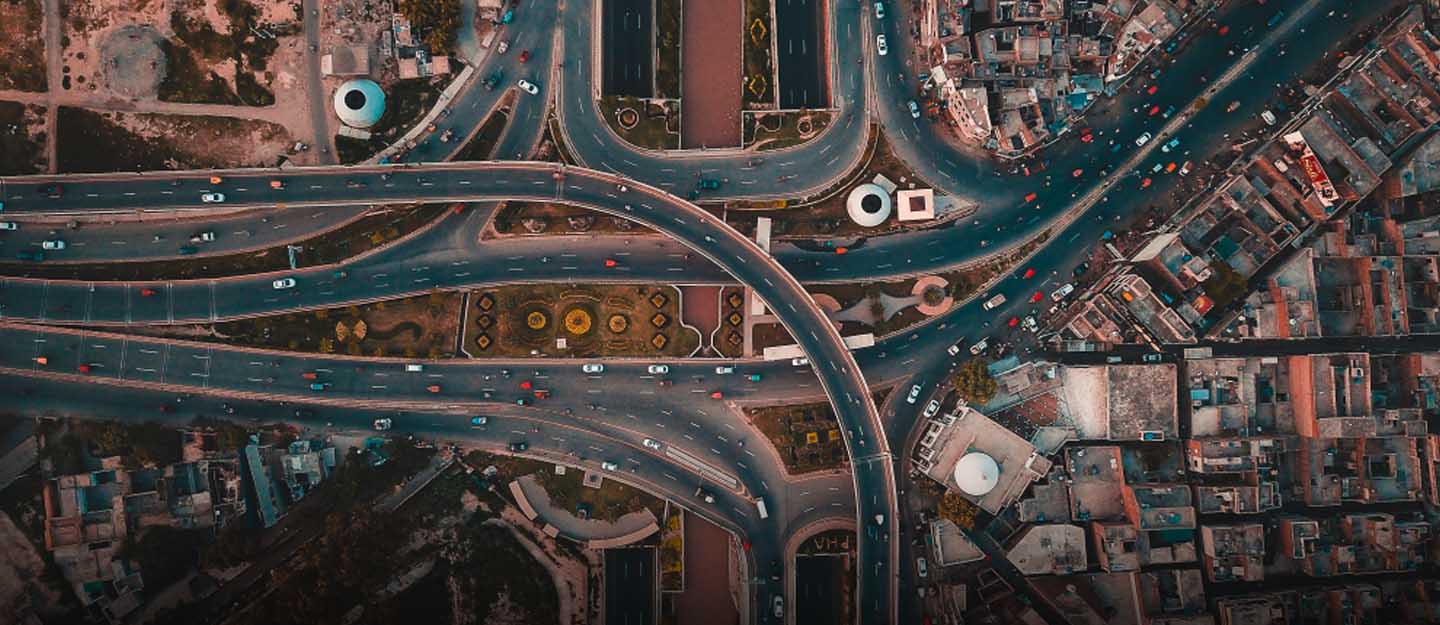
Main Roads passing through Faisalabad
Faisalabad is associated with different pieces of the country by a few National Highways and Motorways. All of them are mentioned here for your better understanding.
- The Grand Trunk Road, also called GT Road, is the first expressway that joins Faisalabad to most pieces of Pakistan just as adjoining nations. GT Road was the fundamental interstate that went through the region before the finishing of the motorways.
- The M-3 motorway (Pakistan) or M3 is an entrance-controlled motorway associating Faisalabad with the M-2 motorway (Pakistan) or M2 through the PindiBhattian Interchange. The M2 was the main motorway interfacing Rawalpindi and Islamabad to Lahore.
- The M-4 motorway (Pakistan) or M4 is an entrance-controlled motorway interfacing Faisalabad to Multan. The M4 further joined the M5 which associates with the southern city of Sukkur.
- The region government has worked with the National Highway Authority to interface Multan and Faisalabad. The M4 was intended to decrease blockage, help exchange, and lessen travel times and transportation costs from Faisalabad, a significant material center point to the significant exchange focus of Multan.
Flyovers in Faisalabad
- Nishatabad Flyover
- Novelty Bridge Flyover
- Tariqabad Bridge to ChakJhumra Road
- JhalKhanuana Flyover
- Abdullahpur Flyover
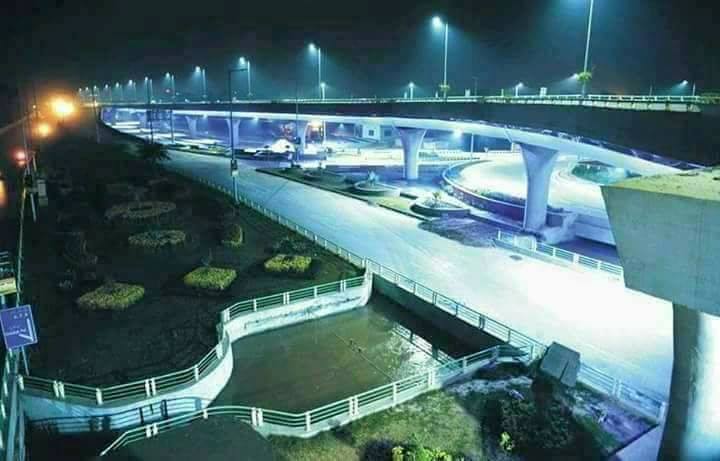
Underpasses in Faisalabad
- Barakat Ali Underpass
- Jhall Road Underpass
- Lyallpur Underpass
- Kashmir Bridge Underpass
- Chenab Chowk Underpass
- Nusrat Fateh Ali Khan Underpass
- Novelty Underpass
Airport of Faisalabad
Faisalabad International Airport is roughly 15 kilometers from the downtown area and is a significant air terminal for homegrown and global travel. The air terminal incorporates a loaded office. As of January 2016, traveler flights are controlled by the public banner transporter, Pakistan International Airlines, and various center eastern transporters. Houses for sale in Faislabad are always on the top of the list while houses for rent are also very much appealing.
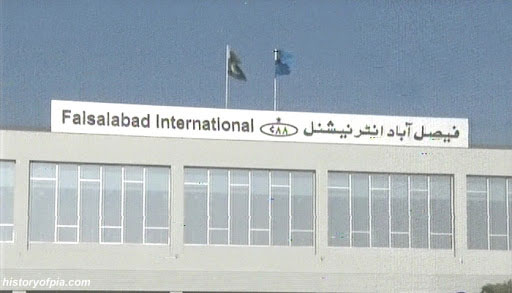
Railway Tracks of Faisalabad
The Faisalabad rail route station is the focal railroad station in the city. The railroad line frames part of the Khanewal–Wazirabad rail line. Rail administrations are worked by Pakistan Railways, possessed and worked by the Ministry of Railways. Properties located at the nearest premises of Faisalabad Railway station are available for sale and rent.
_5274db50-e11a-4ffd-bcb3-6b6e749724ca.jpg)
Freight Express administrations are worked by Pakistan Railways which runs from Karachi to Faisalabad through Multan. 27 intruders involve the merchandise train and are dealt with individually by private project workers at the station. The station has an exceptional load office worked by the Ministry of Railways for taking care of different products from the city to different locales of the country. An express bundle administration runs from Karachi to Lahore by means of Faisalabad.
Pakistan early earns a huge amount of its revenue from Railway services. Trains passing by this route contain a huge number of passengers. All the passengers add a huge value to the country’s growth.
Fun things to do in Faisalabad
If you are going to Faisalabad for the first time and do not know what to do and explore then you are exactly where you need to be right now. We are explaining the best features of Faisalabad and giving you a clear image of how to make the most out of your trip to Faisalabad.
- Visit Clock Tower
Faisalabad’s clock tower is located at the center of the city. One of the oldest landmarks of the city, this place is known for its best view and excellent location. 6 connecting roads and infinite sub-connecting roads make this place easily accessed. This tower was built in 1903 by Sir Charles Riwaz who was the British Lieutenant of that time.
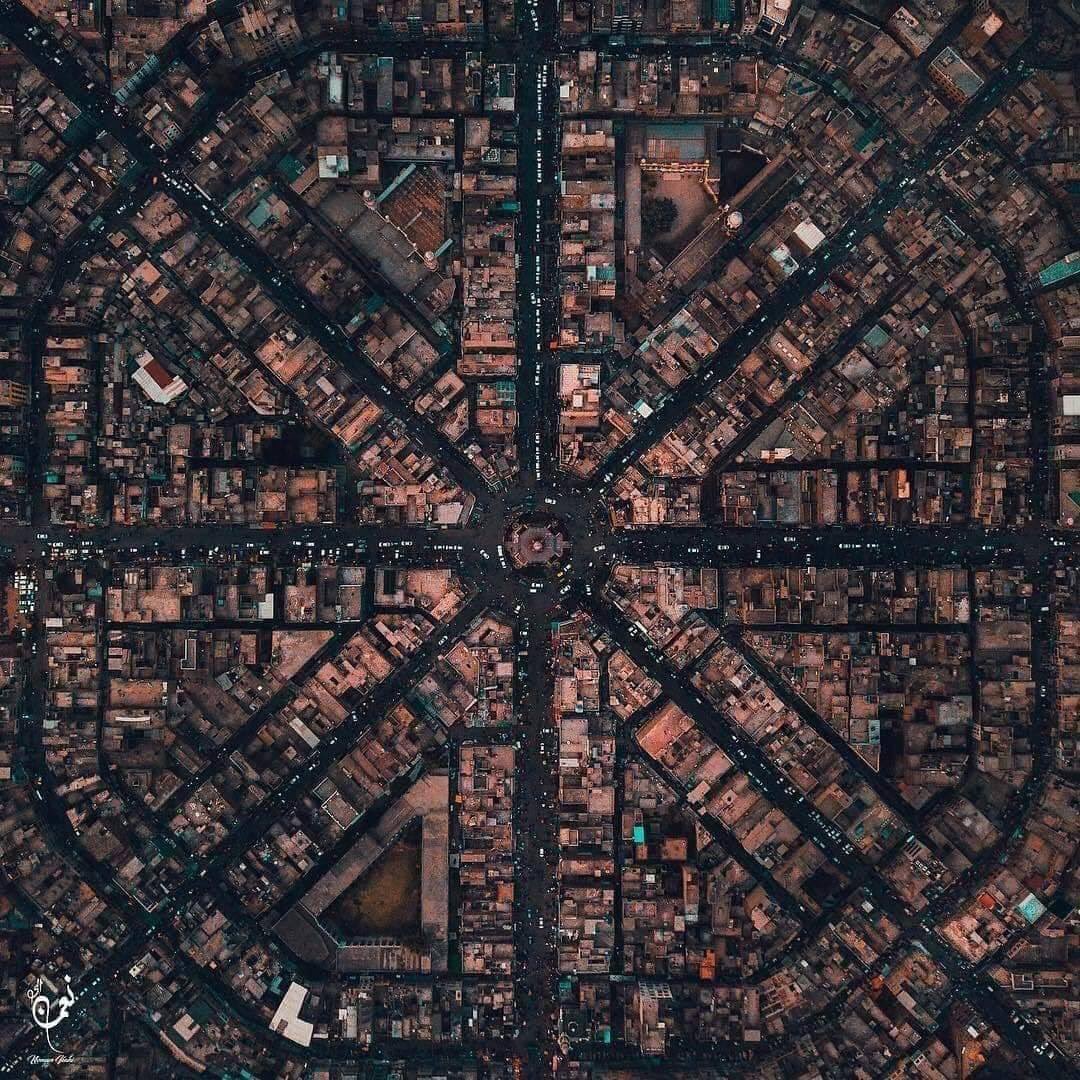
No doubt that this place is known for its comfortable lifestyle. You can start living here by simply find a good house for rent in Faisalabad. the prices are relevantly higher as compared to other areas of the city. You can make the best decision by finding a property through different realtors. More options help you in making the right decision. The houses for sale in the areas of Clock Tower also proves to be very.
The hidden fact that very few people know about this place is that the aerial view of Clock Tower makes the Union Jack, which is the national British flag. 8 bazaar located at the nearest proximity of Clock Tower are as follow:
- Chiniot Bazaar
- Jhang Bazaar
- Karkhana Bazaar
- Amin Pur Bazaar
- Bohwana Bazaar
- Rail Bazaar
- Katechery Bazaar
- Montgomery Bazaar
These bazaars are the best place to shop on a minimal budget. You can always find a diversified variety of what you are looking for. The prices are comparatively very low and the wide supply enables you to make a huge purchase.
- D Ground
One of the must things to do in Faisalabad is a tour to D Ground. If you think that it is plain ground with a sports field then you are wrong!
This is the second biggest commercial hub in the city. You will find diversified small and big businesses here belonging to different niches. The D shape circle area of the D Ground is divided between a park and the office of Radio Pakistan, while the roads forming the D contains a big number of high-end shopping outlets, restaurants, and commercial markets. This is an amazing place for tourists and locals. The prices are very reasonable so is the quality of the products.
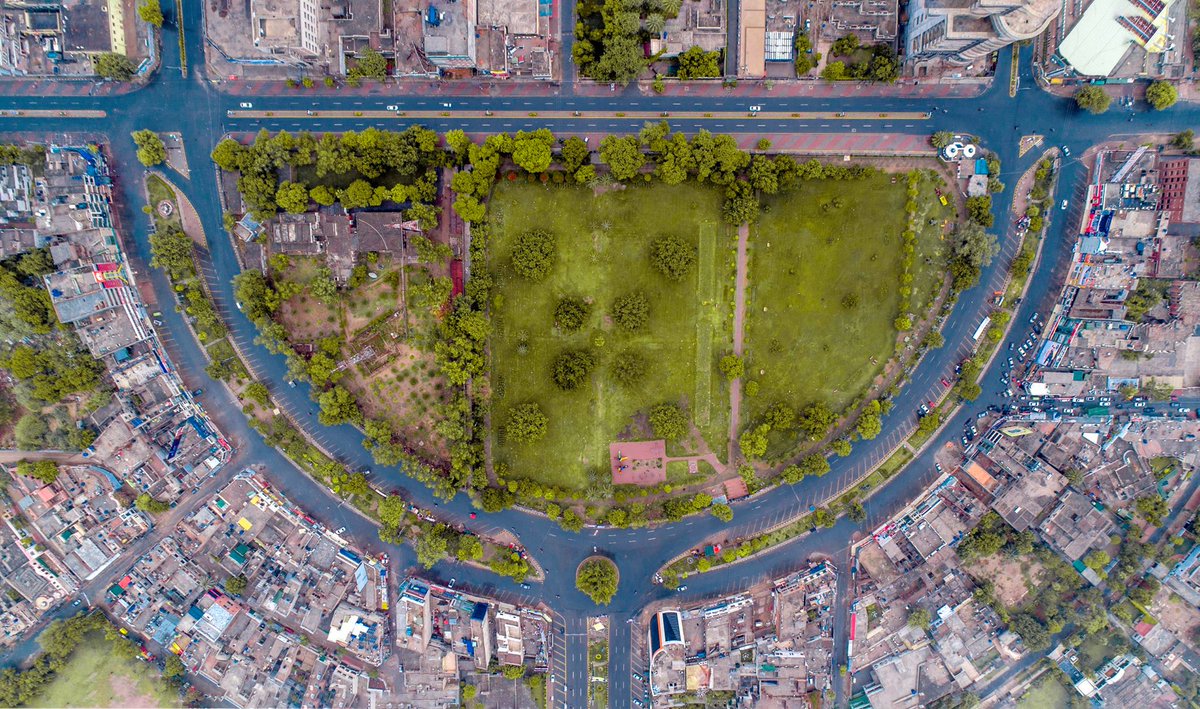
- Qaisery Gate
This magnificent gate is situated on the outer side of Rail Bazaar. Keep walking straight to the gate and you will get to the Clock Tower and 7 connecting markets in the area. This place was once used only for town meetings while now it has been intersected for traffic as well.
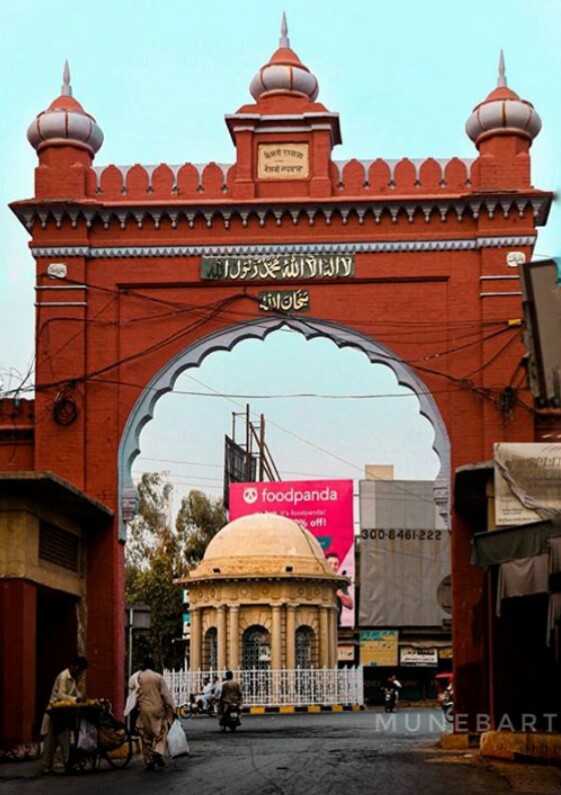
- Lyallpur Museum
Faisalabad and its history with Lyallpur Museum is the most discussed topic. This museum is open to locals. This museum beholds the old heritage of Faisalabad and a lot more. There is so much to admire about this museum and a few of the things are as follow:
- Pakistan Monument Gallery
- Social Beauty Gallery
- Textile Gallery
- Lyallpur Gallery
- Sandal Bar Gallery
- Chenab Colony Gallery
- Regional Heritage Archaeological Gallery
- Thought and Act Gallery
- Orientation Gallery
_83fbbbdc-aa4d-4df2-882a-50141885f1ee.jpg)
Recent Blog

10 Smart & Simple Tricks to Cool Your Home Th...
29 Jun 2025

Budget 2025-26 Breakdown: Reforms, Real Estat...
25 Jun 2025

How to Stay Safe on Your Northern Getaway Whi...
14 Jun 2025

Top 7 Online Qurbani Services in Pakistan for...
29 May 2025





